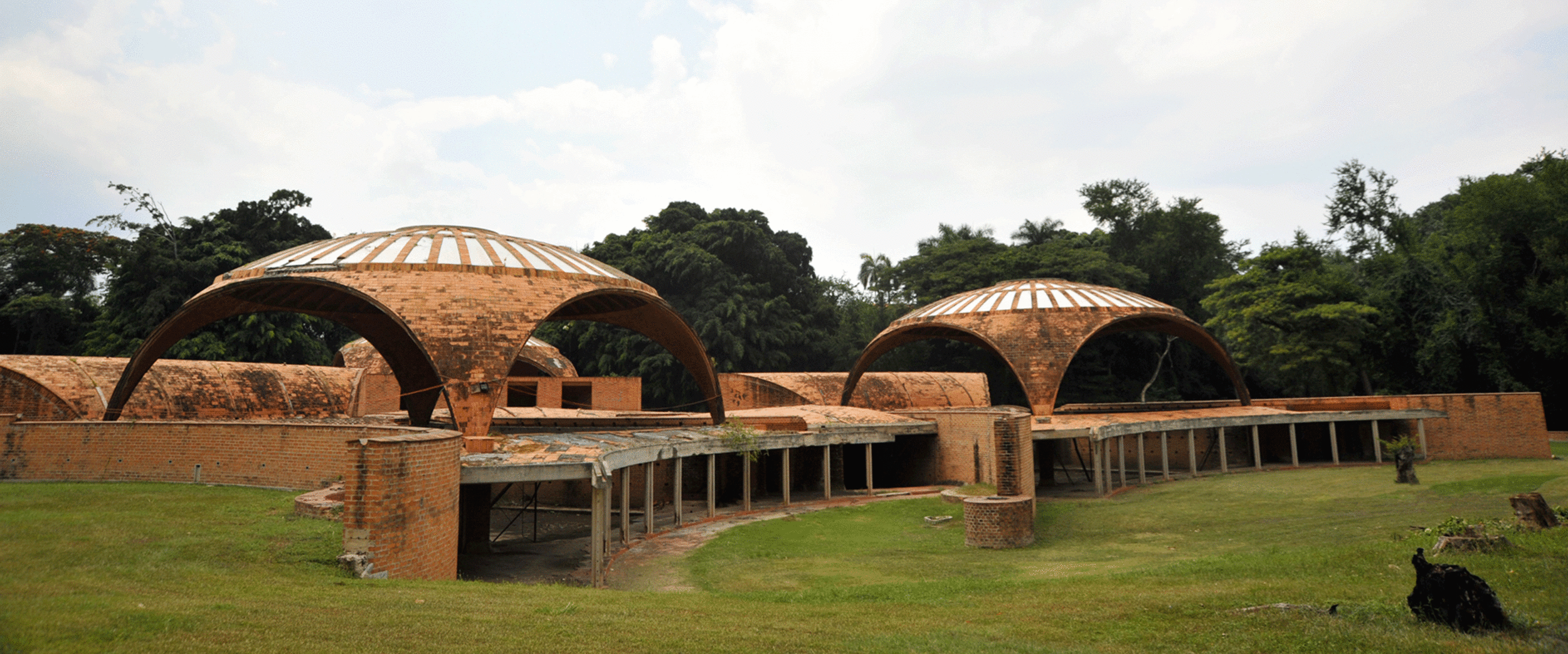By Rebecca Díaz-Atienza
Suddenly, the vision changed.
Unfinished Spaces is a documentary that presents Alysa Nahmias and Benjamin Murray’s rendition of the story of the Forgotten Cuban Art Schools. Their history is presented through a chronological account of interlaced stories of politics, economics, war, and art. Archived video clips of Cuba’s history accompanied by interviews and narrations of the architects involved in the design and construction of these schools, take the viewers on a quest of optimism, bewilderment, sadness, and hopelessness.
At the end of the Cuban revolution in 1959, the new government was eager to start new projects, as would any country seeking to demonstrate its pride on its victory. The original idea to create new art schools in Cuba came from Fidel Castro himself reflecting the utopian optimism of the Revolution. Ricardo Porro, an architect and sculptor, was instantly contacted and given two months for the design of the schools. Vittorio Garatti and Roberto Gottardi joined forces with Porro, and with help from art students started the project. The complete design consisted of 5 schools of art: the School of Modern Dance, the School of Plastic Arts (by Porro), the School of Dramatic Arts (by Gottardi), the School of Music, and the School of Ballet (by Garatti). All the schools were being designed and constructed at the same time. They were supposed to be examples of socialist architecture, with innovative and open designs that reacted against the International Style that was developing around the world. They would become exemplary Cuban Architecture, architecture of the Revolution.
Soon after the project started, so did the embargo and the Cuban Missile Crisis. The material supply for the project became very limited, as did the possible construction systems, because educational funds were redirected to the military. This did nothing to stop the energy that motivated the project, but would certainly cause it to take longer, long enough for the vision to suddenly change. As systematizing and pre-fabrication became the norm in the Soviet Union, Cuba’s ideal shifted. Individual architecture was prohibited, and pre-fabrication would take its place. Architects were viewed as bourgeois, elitists in search of personal gain, instead of communal. Construction of the schools was stopped in 1965, with only Porro’s schools finished. The schools became abandoned and only used clandestinely by young artists and students.
Unfinished Spaces is very clear in demonstrating the relationship between architecture and state and politics. The Schools of Art were the result of the Revolution, their designs the result of a political ideal, their construction systems a result of economy and their stop a result of a paradigm shift. The project was founded by the political vision of the moment, and throughout its development it was changed by it.
In 1999, John Loomis published the book “Revolution of Forms: Cuba’s Forgotten Art Schools,” which narrated the story of the schools and presented pictures of their current deteriorated state. After the importance and magnificence of these schools became evident (greatly because of Loomis), Fidel was reminded of the ideals of the Revolution, of the wish to demonstrate their success. Fidel invited the exiled architects to finish their work. He determinedly established that the 40-year old dream would come true and that the schools would be finished.
Hope diminishes as the last shot of the documentary tells us that in 2009, the project was halted again.
Film Forward is a Sundance Institute initiative and works as an itinerant film festival. In September of 2012, Film Forward brought the film to the School of Architecture’s auditorium followed by a discussion with co-director Alysa Nahmias.
Film’s official Website : http://www.unfinishedspaces.com/
John Loomis’ Website : http://www.revolutionofforms.com/author.html




